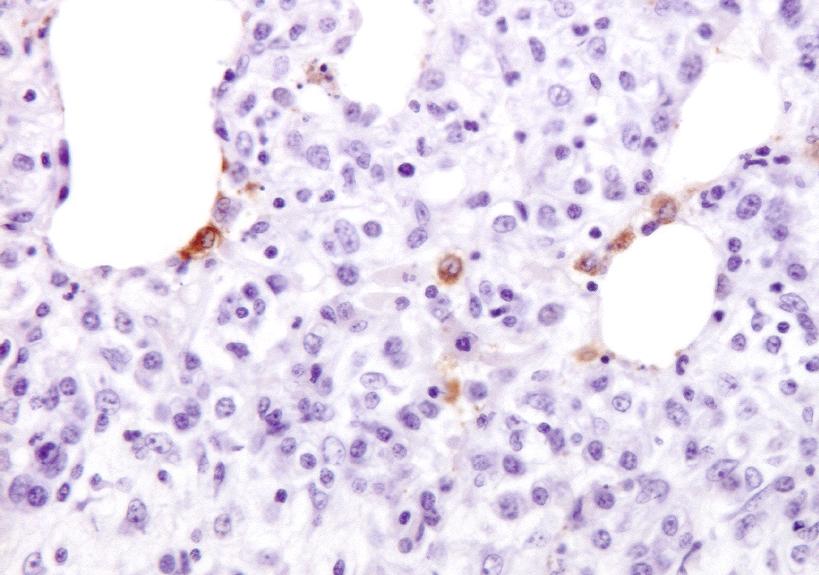Porcine reproductive and respiratory syndrome type 1 viruses induce hypoplasia of erythroid cells and myeloid cell hyperplasia in the bone marrow of experimentally infected piglets independently of the viral load and virulence
Porcine reproductive and respiratory syndrome viruses (PRRSV) present a wide phenotypic and genetic diversity. Experimental infections have demonstrated viral replication, including highly pathogenic strains (HP-PRRSV), in primary lymphoid organs such as the thymus. However, studies of the bone marrow are scarce but necessary to help elucidate the immunobiology of PRRSV strains of differing virulence. In this study, whereas viral RNA was detected within the bone marrow of animals experimentally infected with both low virulent Lelystad (LV) and 215-06 PRRSV-1 strains and with the highly virulent SU1-bel strain, PRRSV positive cells were only occasionally detected in one SU1-bel infected animal. PRRSV RNA levels were associated to circulating virus with the highest levels detected in LV-infected pigs. At 3 dpi, a decrease in the proportion of haematopoietic tissue and number of erythroid cells in all infected groups was associated with an increase in TUNEL or cleaved caspase 3 labelling and higher counts of myeloid cells compared to control. The expression of IL-1? and IL-6 was elevated at the beginning of the infection in all infected animals. The expression of TNF-? was increased at the end of the study in all infected groups with respect to control. Different PRRSV-1 strains induced, presumably by indirect mechanisms and independently of viral load and strain virulence, moderate and sustained hypoplasia of erythroid cells and myeloid cell hyperplasia at early stages of infection. These changes were paralleled by a peak in the local expression of IL-1?, IL-6 and TNF-? in all infected groups.
